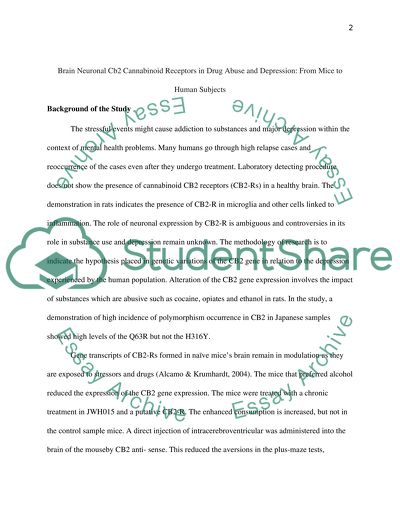Cite this document
(“Brain neuronal Cb2 cannabinoid receptors in drug abuse and depression Assignment”, n.d.)
Brain neuronal Cb2 cannabinoid receptors in drug abuse and depression Assignment. Retrieved from https://studentshare.org/health-sciences-medicine/1466394-brain-neuronal-cb2-cannabinoid-receptors-in-drug-abuse-and-depression
Brain neuronal Cb2 cannabinoid receptors in drug abuse and depression Assignment. Retrieved from https://studentshare.org/health-sciences-medicine/1466394-brain-neuronal-cb2-cannabinoid-receptors-in-drug-abuse-and-depression
(Brain Neuronal Cb2 Cannabinoid Receptors in Drug Abuse and Depression Assignment)
Brain Neuronal Cb2 Cannabinoid Receptors in Drug Abuse and Depression Assignment. https://studentshare.org/health-sciences-medicine/1466394-brain-neuronal-cb2-cannabinoid-receptors-in-drug-abuse-and-depression.
Brain Neuronal Cb2 Cannabinoid Receptors in Drug Abuse and Depression Assignment. https://studentshare.org/health-sciences-medicine/1466394-brain-neuronal-cb2-cannabinoid-receptors-in-drug-abuse-and-depression.
“Brain Neuronal Cb2 Cannabinoid Receptors in Drug Abuse and Depression Assignment”, n.d. https://studentshare.org/health-sciences-medicine/1466394-brain-neuronal-cb2-cannabinoid-receptors-in-drug-abuse-and-depression.


